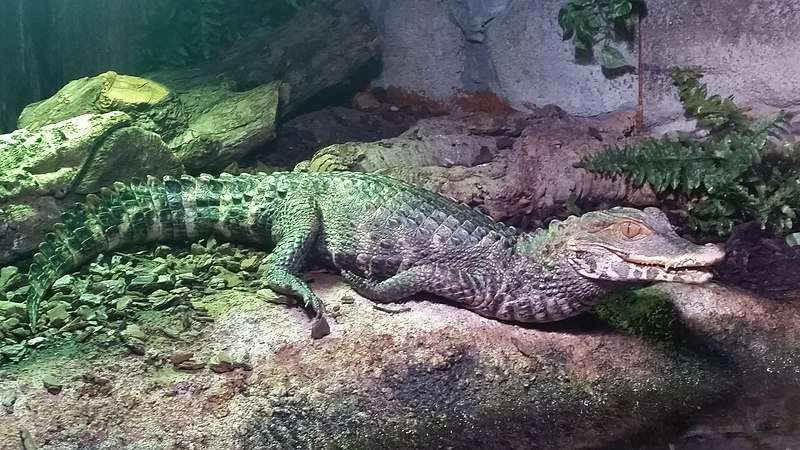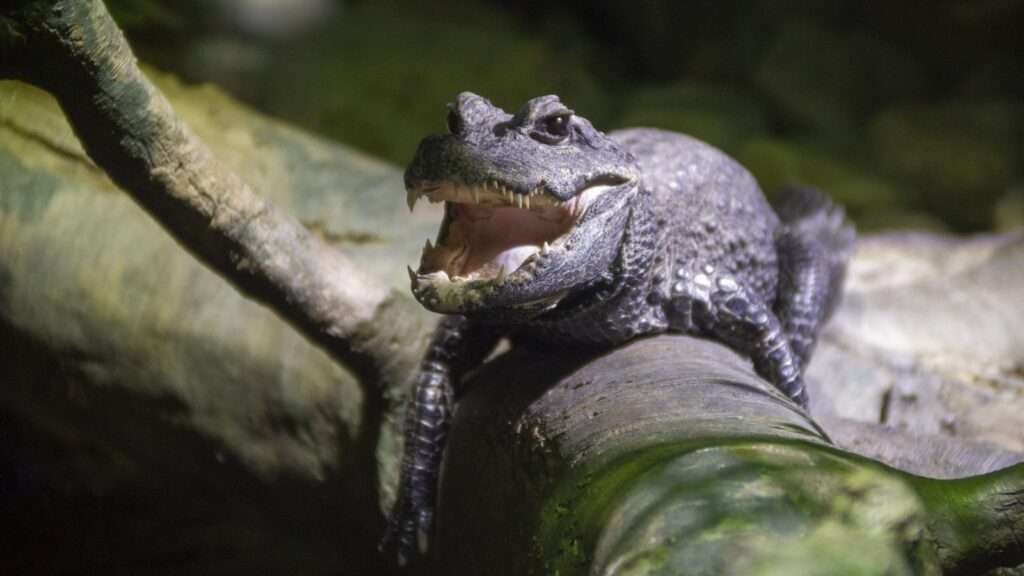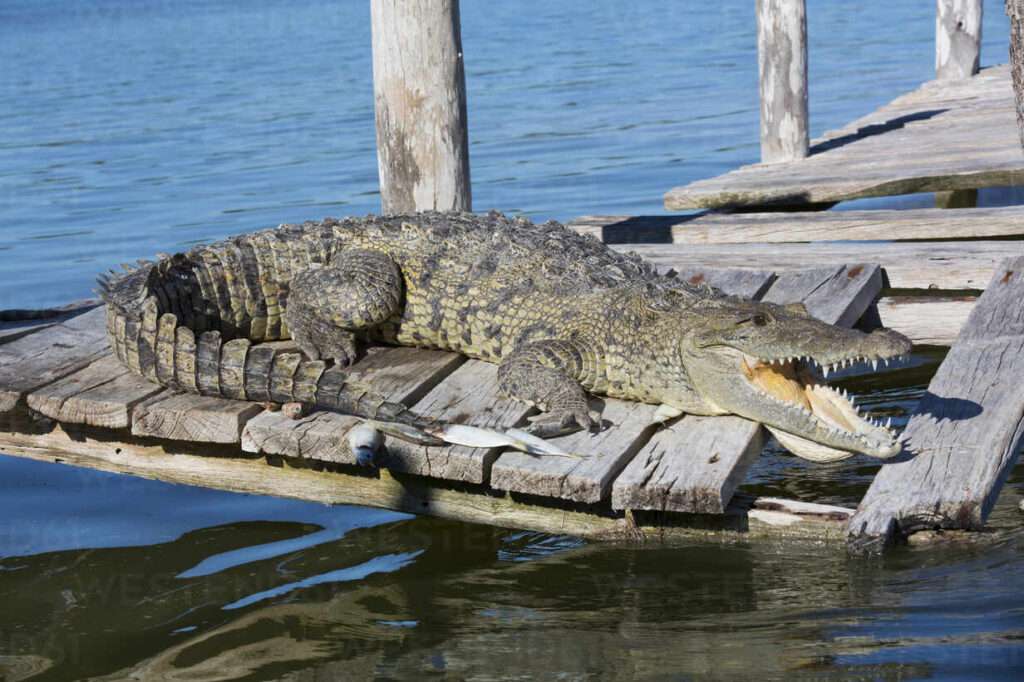
Description:
Scientific name: Paleosuchus palpebrosus
Life span: Around 25 years in the wild, and up to 60 years in captivity
Paleosuchus palpebrosus, a species of dwarf caiman, is a dark reddish-brown color. They have extensive back and stomach armour (this provides protection from predators). Their short, sleek head has a high cranium and a long, upturned snout. Between the eyes, there are no bony ridges on the head. While the top and bottom jaws are mainly plain on the dorsal surface, they are covered in a number of dark and light markings. Up to the tip, the tail is marked with circumferential bands. Brown eyes are present. When the jaws are closed, the fourth tooth on each side of the bottom jaw is hidden inside a socket in the top jaw.

Native Region/Habitat
The northern and central regions of South America are home to Cuvier’s dwarf caimans. These can be found in the upper portions of the Paraná and Paraguay rivers, as well as the drainages of the Orinoco, So Francisco, and Amazon rivers. Peru, Ecuador, Colombia, Surinam, Venezuela, Guyana, Bolivia, Brazil, French Guiana, Trinidad and Tobago, and Paraguay are among the nations where they can be found. Freshwater reptiles known as Cuvier’s tiny caimans can be found in flooded forest areas near lakes and in forested riverine habitats.
Behavior:
The dwarf caimans of Cuvier are primarily nocturnal. They occasionally lie up in burrows, take naps on rock piles, or bask in the sun while submerged in shallow water with their backs exposed. To stay cool during the dry season, they may aestivate (a state resembling hibernation). Both the water and the land are home to Cuvier’s dwarf caimans. They may move quite a distance over land at night, and they occasionally turn up in solitary temporary ponds. Often, adult caimans are found alone or in pairs. They exchange messages with one another through touch, sounds, postures, motions, and smells. Caimans can hiss angrily and enlarge their bodies to appear larger when they feel threatened.
Care As a pet/In captivity:
Enclosure
A lifelong habitat will need to be created specifically for a 5-foot caiman because there aren’t many enclosures on the market that are made with that size in mind. For one fully grown person, the enclosure should be at least 16′ by 8′ in size, with a 36″ substrate dam to accommodate for the depth of the water. When in doubt, go for the biggest option! As PVC enclosures are durable, waterproof, lightweight, and provide decent insulation, they would be a fantastic choice. Keep in mind, though, that sealant will be necessary to stop leaks. Another alternative for the enclosure is plywood. Silicone coating the cage is necessary, though, to stop your cleanup crew from chewing through the wood and allowing it to degrade.
Food
The Cuvier’s dwarf caiman is a carnivore, which means it relies on eating other animals to exist, like other crocodilians do. Depending on the caiman’s size, what it eats:
Hatchlings to Yearlings
- Every other day to daily feeding
- Diet: guppies, hornworms, pinky to adult mice, krill, dubia, crickets, and dubia
Minors to substitute adults
- Feed 2–3 times a week.
Adult mice, small to medium rats, whole fish, quail, shrimp, and insects make up their diet.
- Adults eat 1-2 times per week.
- Large rodents, poultry, whole fish, shrimp, and portions of meat in their diet (supplemented with vitamin powder).
Heating
Caimans can be challenging to heat because they are native to tropical climates and because their permanent house will be rather big. They also require a thermal gradient to maintain their body temperature because they are cold-blooded creatures.
Your Cuvier’s dwarf caiman needs the following temperatures for optimal results:
- 84 to 93 degrees Fahrenheit are the temperatures outside.
- Temperature range for a bath: 97 to 100 degrees F.
- Temperature of the water: 77 to 82 degrees Fahrenheit
At the temperatures you require, all heaters must be connected to a thermostat.
Table





